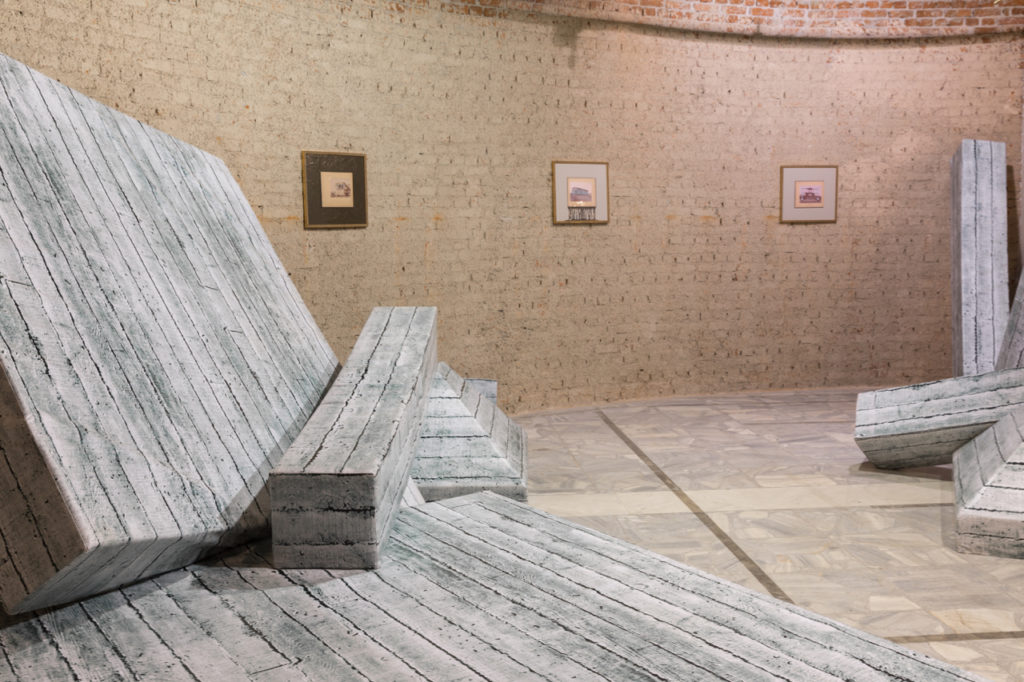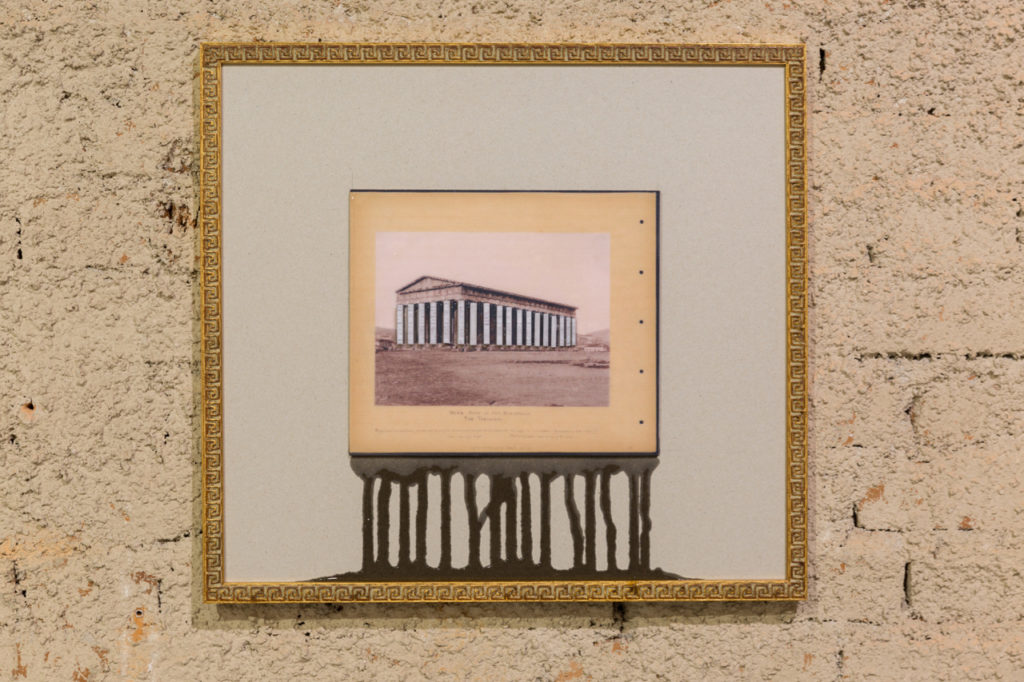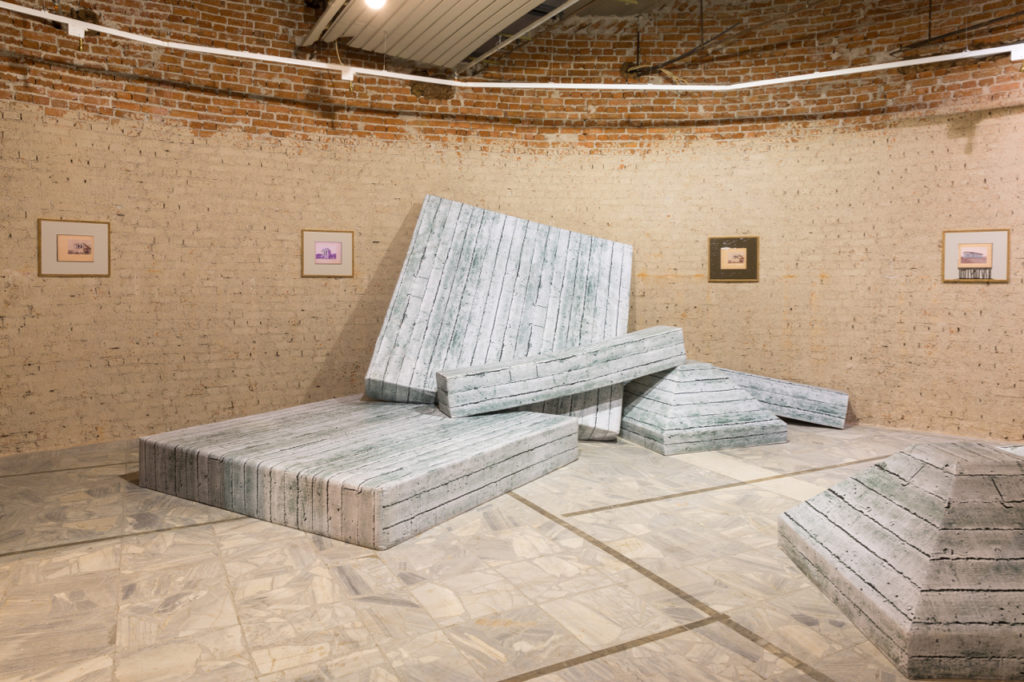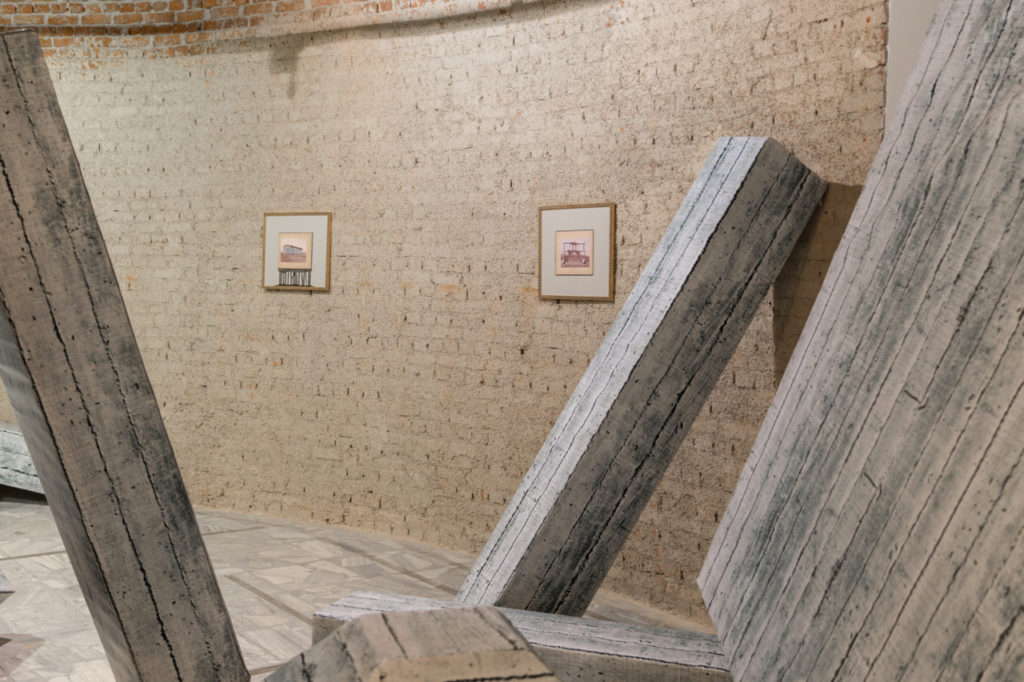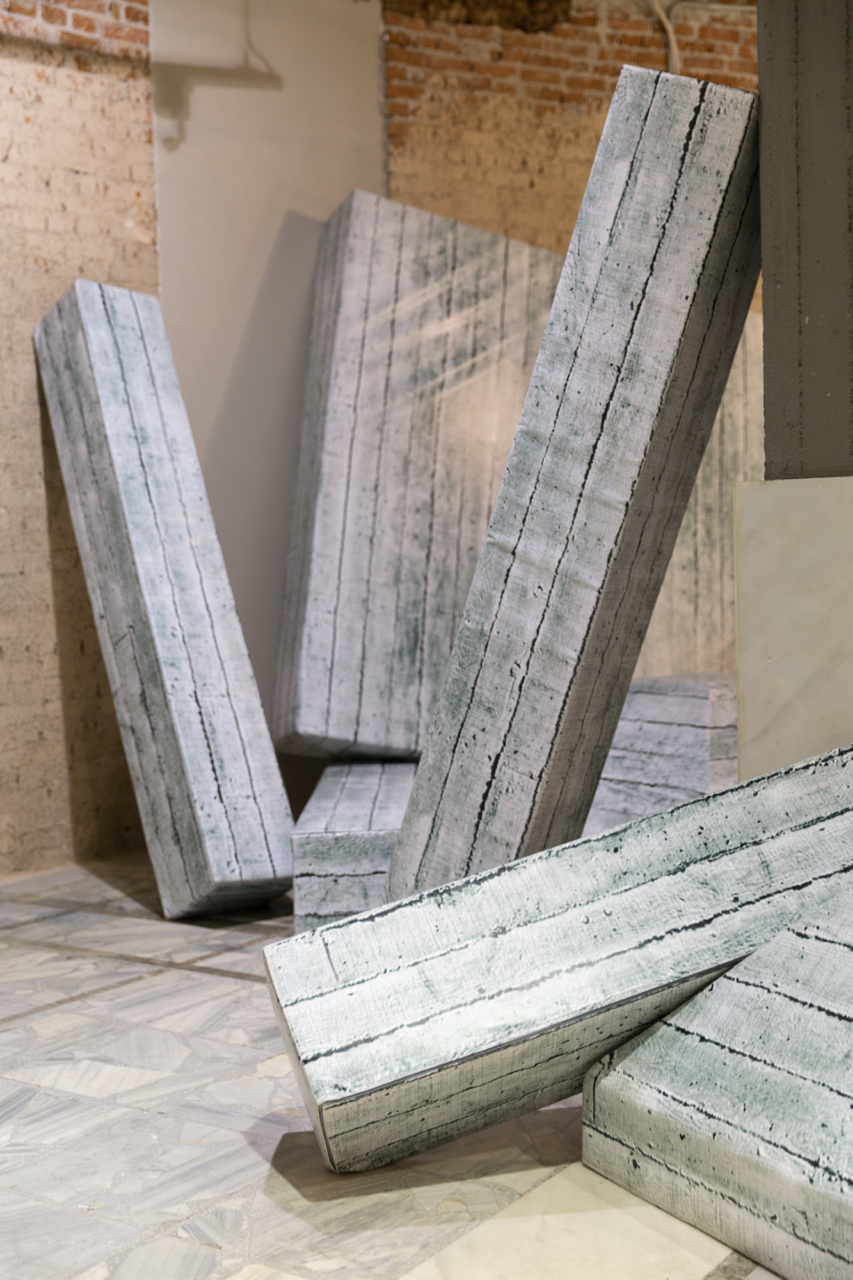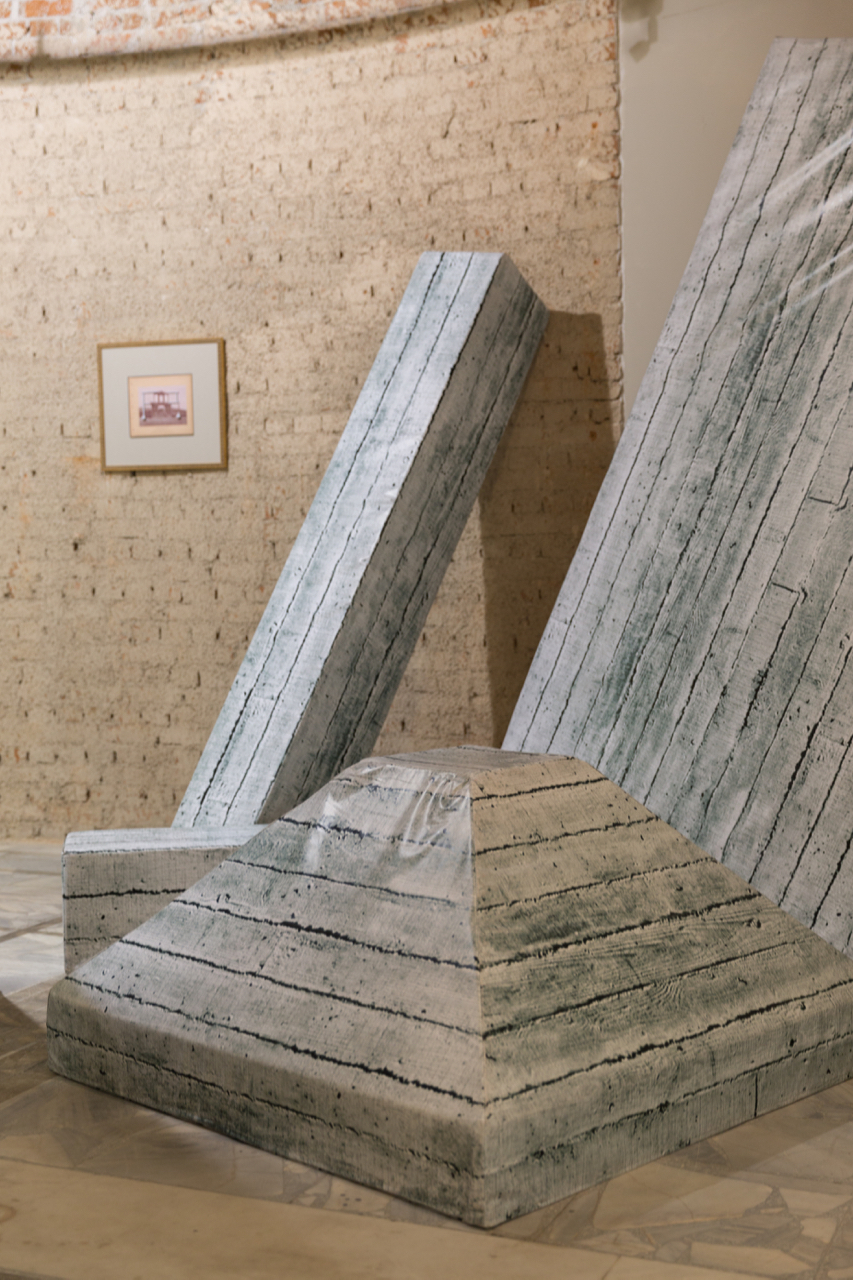Andreas Angelidakis
Art Athina 2018
June 21, 2018–June 24, 2018Athens Conservatoire, Athens
The Breeder participated in Art Athina 2018 with a solo presentation by Andreas Angelidakis.
Andreas Angelidakis’ work straddles the line between art and architecture. Drawing on existing buildings and digital artifacts, his animated videos and ornaments address the passing of time and “the question of site specificity at a time when to be in one place is to already be in several others.” He undertakes a kind of media archaeology in his works when he posits an analogy between the classical philosopher Diogenes and ancient vessels emblazoned with drawings and stories on the one hand, and our use of media today on the other.
William Vaughn Tupper (1835-1898) was an American financier who travelled around Europe and North Africa between 1891-1895. In every place he bought photographs – touristic souvenirs, and organized them in albums to document his travels, that are known today as the Tupper Scrapbooks. From his visit to Athens he organized three volumes with photographs from the sights of the city, that at the time included Ancient ruins and also the contemporary Neoclassical Athens. In Andreas Angelidakis 3D collages a third element is introduced, along the Ancient and the Neoclassic, the concrete construction. The beton brut beams claim their position in the iconography of the city, and also in its history by posing as ancient columns or by expanding the buildings they come across. They thus introduce to the romantized idea of 19th century Athens fragments from the future.
Andreas Angelidakis is shortlisted for the Nam June Paik Award currently on view at Westfälischer Kunstverein, Münster. He is also participating in the Biennale de l’Image en Mouvement 2018 at Centre d’Art Contemporain Genève, curated by curated by Andrea Bellini, Director of the Centre d’Art Contemporain Genève, and Andrea Lissoni, Senior Curator, International Art (Film) at Tate Modern. He was included in Documenta 14 in Athens and Kassel.
Buildings are the central characters in Andreas Angelidakis’ work. His buildings evolve through time, express emotions and act on their feelings. Sometimes we find them on a path to completion, other times toward a state of ruin. The buildings in Angelidakis’ works come alive, they leave places, reach new destinations, suddenly explode or gradually erode.
As 3D printing technology developed in the 2000s, its use became a medium of its own, eventually leading to buildings designed only to be 3D printed. This transition coincided with the advent of social media, and somehow this provides who would live in these buildings. The 3D printed works are thus buildings inhabited by likes and regrams on instagram and tumblr. But how big is a like? How much room does a retweet take?
In online dictionaries the Bibelot is described as a French term invented for all these objects that have no clearly understandable use apart of our potential emotional involvement. A bibelot can be an object of exquisite or abominable taste. A bibelot is an object that always belies the presence of a collector, a bibelot is always part of a series. What are cities if not large scale collections of bibelot buildings?
Andreas Angelidakis is shortlisted for the Nam June Paik Award currently on view at Westfälischer Kunstverein, Münster. He is also participating in the Biennale de l’Image en Mouvement 2018 at Centre d’Art Contemporain Genève, curated by curated by Andrea Bellini, Director of the Centre d’Art Contemporain Genève, and Andrea Lissoni, Senior Curator, International Art (Film) at Tate Modern. He was included in Documenta 14 in Athens and Kassel.
